Top Reasons Thailand Industries Choose Pallet Inverters for Manual Handling in Food & Pharma Industries
Running a modern factory is a constant balancing act. In industries like food and pharmaceuticals, the stakes are incredibly high. You face pressure to keep costs down while meeting some of the world's strictest standards for hygiene and safety. A single mistake in your handling process can lead to contaminated products, injured workers, or rejected shipments. I've seen firsthand how these small operational gaps can grow into major problems, hurting a company's bottom line and reputation. It's a challenge that keeps many plant managers and owners awake at night. But what if there was a straightforward, mechanical solution that could close these gaps, protecting both your products and your people? This is the exact problem that many successful companies in Thailand are solving right now, and their solution is surprisingly simple.
Thailand's food and pharma industries choose pallet inverters for four key reasons: to enforce strict hygiene control, to dramatically improve worker safety, to increase operational speed and efficiency, and to reduce costly product damage. These machines provide a simple and automated way to switch loads from external, often-contaminated wooden pallets to clean, in-house plastic or aluminum pallets. This single step addresses multiple critical compliance and performance requirements, making it a cornerstone of modern material handling in a competitive, export-focused market.
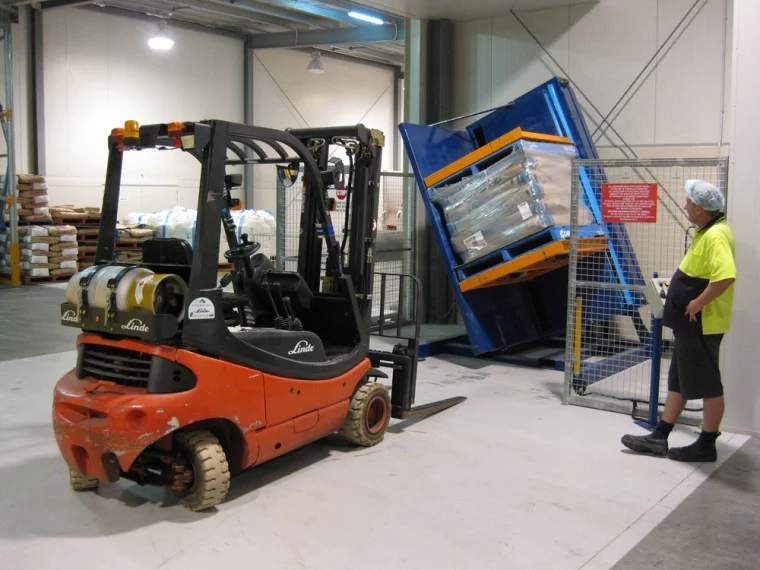
These benefits sound great, but as an engineer and a business owner, I know you need more than just claims. You need to understand the mechanics and the real-world impact. How does a machine that simply turns a pallet upside down deliver so much value? Throughout my career, I've learned that the most elegant solutions are often the simplest ones, and the pallet inverter is a perfect example. We are going to break down each of these four reasons. We will look at the specific problems they solve and how the technology provides a clear return on investment. Let's get into the details.
Why is hygiene and contamination control a critical driver for adopting pallet inverters?
In the food and pharmaceutical sectors, you can't afford to take chances with cleanliness. A clean production environment is not a goal; it's a license to operate. Wooden pallets, which are the standard for shipping, often arrive at your facility carrying dust, moisture, insects, or chemical residues from the outside world. Bringing them into your sterile production area is a risk you simply cannot take. Imagine a single contaminated pallet leading to a full product recall. The financial loss is huge, but the damage to your brand's reputation can be permanent. This is the exact problem that keeps quality assurance managers on high alert. So, how do you create a perfect barrier? You can invest in expensive, complex airlock systems, but a much simpler solution lies in how you handle your goods at the entry point.
Hygiene and contamination control are critical drivers for adoption because pallet inverters create a clean break between external logistics and internal production. They allow companies to transfer goods from "street" wooden pallets to sanitized, GMP-compliant plastic or aluminum pallets right at the receiving dock. This process is fundamental to meeting HACCP and GMP standards, which are non-negotiable for any Thai company exporting food or medicine to international markets. It's a simple, reliable, and auditable control point.
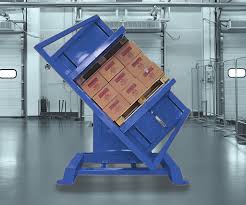
A Deeper Look at the Hygiene Imperative
Let's break this down from an engineering and compliance perspective. When we talk about hygiene in a factory, we often think in terms of zones. You have an uncontrolled "low-risk" or "red" zone, like the loading dock where trucks from the outside arrive. Then you have a controlled "high-care" or "green" zone, which is your production and clean storage area. The biggest challenge is moving materials from the red zone to the green zone without carrying contaminants along.
This is where the pallet itself becomes a major focus. Wooden pallets are problematic for several reasons:
- Porous Surface: Wood absorbs moisture, which can lead to mold and bacterial growth.
- Pest Infestation: It can harbor insects and require chemical treatments like fumigation, which can introduce their own contamination risks.
- Difficult to Clean: Splinters, nails, and the rough surface of wood make it impossible to sanitize effectively.
Plastic or aluminum pallets, on the other hand, are non-porous, easily washed and sanitized, and have smooth surfaces. They are the standard for any high-care environment. The pallet inverter serves as the gatekeeper between these two zones. The process is straightforward: A forklift brings the wooden pallet with its load from the truck into the red zone and places it in the inverter. The machine clamps the load, rotates it 180 degrees, and allows the operator to easily remove the wooden pallet from the top. A clean, sanitized plastic pallet is then placed on the load, and the machine rotates back. The load, now on a clean pallet, can proceed into the green zone.
Here is how this simple change impacts compliance and operational reality:
| Feature | Manual Transfer (Destacking) | Pallet Inverter Transfer |
|---|---|---|
| Contamination Risk | High. Goods are handled individually, exposing them to the air and operator contact. | Very Low. The product stack remains intact and is only touched by the machine's clean clamping surfaces. |
| Process Control | Difficult to monitor and enforce. Relies on worker discipline. | Highly controlled and repeatable. Provides a clear, auditable step in the HACCP plan. |
| Pallet Debris | High risk of wood splinters or dust contaminating the product or the clean area. | Zero risk. The wooden pallet never enters the high-care zone. |
| Compliance | Often fails to meet strict international standards (e.g., FDA, BRC, EU). | Easily meets and exceeds global food and pharma safety standards. |
For Thailand, which prides itself as the "Kitchen of the World," meeting these international standards is not optional. It is essential for market access. I've spoken with clients who, before installing inverters, faced entire shipments being held or rejected by European customers simply because a wooden pallet was found inside a "clean" container. The cost of one rejected container often exceeds the cost of a pallet inverter, making the investment decision very clear.
How do pallet inverters significantly improve worker safety and ergonomics?
Think about your most valuable asset. It's not your machinery or your building; it's your people. Now, consider what we ask them to do when a pallet needs to be swapped manually. We ask two or three workers to bend over, lift heavy boxes—often weighing 15-25 kg each—twist their bodies, and re-stack them on a new pallet. They might do this dozens of times a day. This is a textbook recipe for musculoskeletal injuries (MSIs), particularly to the lower back. The physical toll is immense. This leads directly to lost workdays, high worker compensation costs, and a constant struggle to retain good, experienced employees. You can't build a strong, reliable team on a foundation of unsafe work practices. There must be a better way to do this that respects the physical limits of your workforce.
Pallet inverters significantly improve worker safety by completely eliminating the need for manual lifting and restacking during pallet exchange. The machine bears the full weight of the load, performing the physically strenuous task of transfer through automation. This engineering control removes the primary cause of back strains and other MSIs associated with this job. By doing so, companies in Thailand not only protect their employees but also easily comply with national and international occupational health and safety laws, creating a more stable and productive workforce.
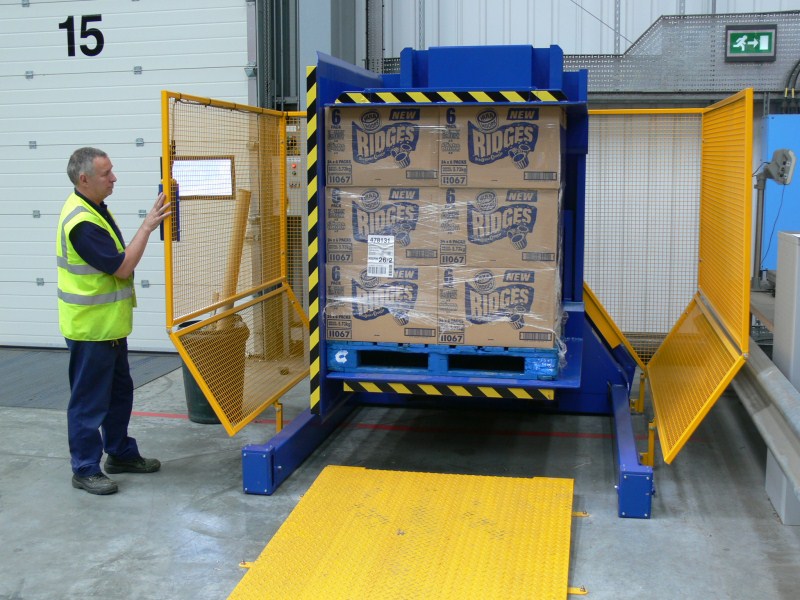
A Deeper Look at the Ergonomic Equation
From an engineering standpoint, the human body is not designed for the repetitive tasks involved in manual pallet destacking. The combination of bending, lifting, and twisting is one of the most hazardous motions for the spine. Over time, this leads to cumulative trauma disorders that can result in chronic pain and disability.
Let's analyze the forces at play. Lifting a 20 kg box from near floor level can place a force of over 200 kg on the lower back. Now multiply that by the number of boxes on a pallet (say, 50) and the number of pallets per day. The accumulated strain is enormous. It's not a question of if an injury will occur, but when.
A pallet inverter changes this equation entirely by shifting the work from the employee to the machine. The operator's role becomes one of supervision and control, not manual labor. They use a forklift or pallet jack to position the load, press a button, and let the hydraulics do the heavy work.
This table clearly illustrates the difference:
| Metric | Manual Pallet Transfer | Inverter-Assisted Transfer |
|---|---|---|
| Primary Physical Motion | Bending, lifting, twisting, carrying | Pushing buttons, operating controls |
| Risk of Back Injury | Very High | Negligible |
| Worker Fatigue | High, leading to decreased productivity and increased errors over a shift. | Low, allowing for sustained focus and higher-quality work. |
| Personnel Required | 2-3 workers | 1 operator |
| Compliance with OHS | Difficult to justify as a safe practice. | The ideal example of an engineering control to eliminate a hazard. |
When I started my own factory, one of my core principles was to design processes that were safe for my team. I learned early on that investing in safety equipment isn't a cost; it's an investment in productivity and morale. When your team knows that you are looking out for their well-being, they are more engaged, more careful, and more loyal. In a competitive labor market like Thailand's, being known as a safe employer is a significant advantage. The pallet inverter is a very visible symbol of that commitment. It sends a clear message to your employees: we value your health and safety. This builds trust, which is the foundation of any successful manufacturing operation.
In what ways do these machines boost operational efficiency and throughput?
Your factory is like a chain, and it's only as strong as its weakest link. You might have high-speed production and automated packaging lines, but if goods pile up at the receiving or shipping dock waiting for a slow, manual process, you have a bottleneck. Manual pallet swapping is a classic bottleneck. It's slow, unpredictable, and labor-intensive. Think about a truck arriving with 20 pallets that need to be switched to in-house pallets before the raw materials can be moved to production. This process can tie up several workers and a forklift for hours, delaying production and causing congestion on the dock. This inefficiency ripples backward through your entire supply chain, costing you time and money.
Pallet inverters boost operational efficiency by transforming a slow, manual task into a fast, automated one. A process that takes two workers 15 to 20 minutes to complete by hand can be finished by a single operator in less than 60 seconds with an inverter. This dramatic reduction in cycle time breaks the bottleneck at critical transfer points like goods-in and goods-out. The result is a significant increase in throughput, allowing more materials to be processed and more orders to be shipped each day.
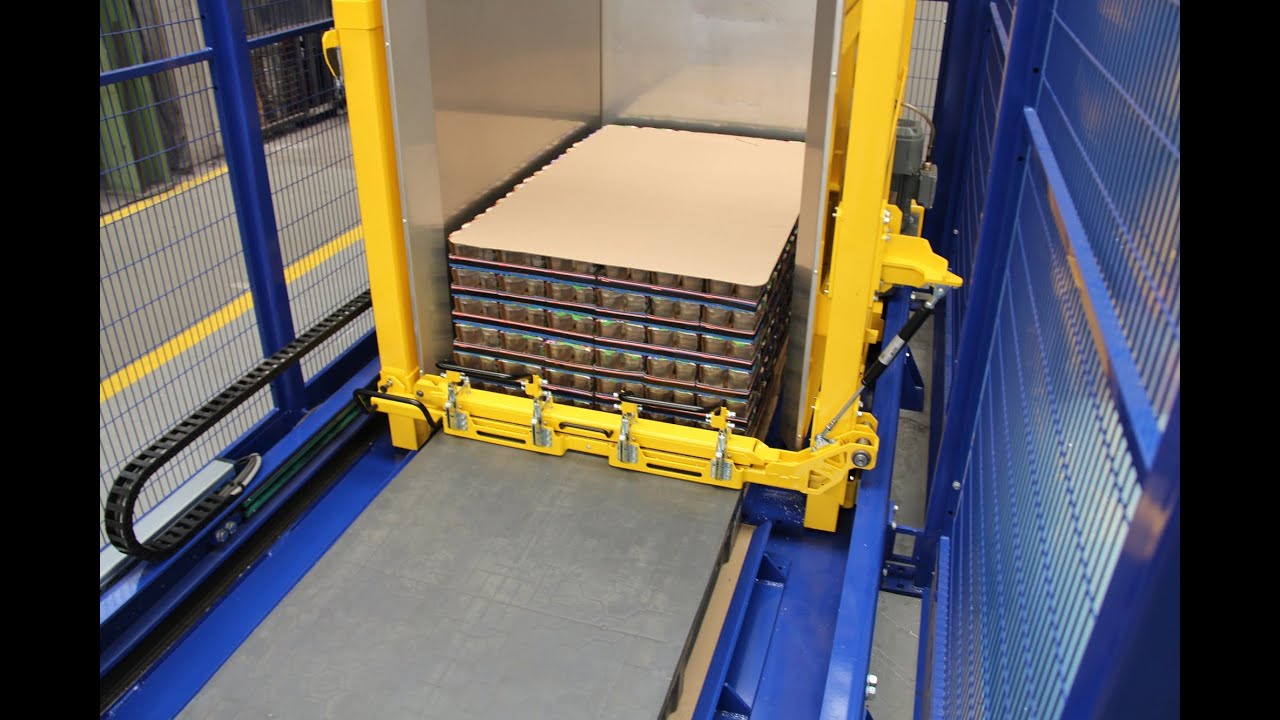
A Deeper Look at Speed and Flow
Let's quantify this improvement with a simple time study. The goal in any production environment is to maximize flow and minimize waste. Wasted time is one of the most significant forms of waste.
Manual Pallet Swapping Scenario:
- Personnel: 2 workers + 1 forklift operator.
- Process: Forklift brings pallet. Workers manually destack all boxes onto a new pallet. Workers wrap the new pallet. Forklift removes the new pallet.
- Time per Pallet: 15 minutes (on average, can be longer for heavy or unstable loads).
- Throughput: 4 pallets per hour.
Pallet Inverter Scenario:
- Personnel: 1 forklift operator.
- Process: Forklift places pallet in the inverter. Operator presses a button. Machine rotates, operator swaps pallets. Machine rotates back. Forklift removes the finished pallet.
- Time per Pallet: 1-2 minutes.
- Throughput: 30-40 pallets per hour.
The difference is not just an incremental improvement; it's a transformation.
| Performance Indicator | Manual Process | Pallet Inverter Process |
|---|---|---|
| Pallets per Hour (max) | ~4 | ~40 |
| Labor Cost per Pallet | High (2-3 workers) | Low (1 operator) |
| Floor Space Required | High (needs large area for re-stacking) | Low (compact machine footprint) |
| Process Consistency | Low (depends on worker speed/fatigue) | High (repeatable machine cycle time) |
| Impact on Other Ops | Creates delays for trucks and production | Enables smooth, continuous flow |
This increase in speed has powerful ripple effects. At the receiving dock, raw materials get into your inventory and onto the production line faster. This reduces the chance of stock-outs and allows for leaner inventory management. At the shipping dock, it means you can load trucks faster, reduce driver waiting times, and fulfill more orders per shift. This is especially critical in the fast-moving consumer goods (FMCG) sector, a huge part of Thailand's food industry. I remember visiting a beverage plant where the installation of two pallet inverters allowed them to clear their shipping dock 90 minutes earlier each day, enabling them to add an extra delivery run for a major customer. This is a direct, measurable increase in capacity and revenue, achieved by addressing a single bottleneck.
Can pallet inverters actually reduce costs by minimizing product damage?
Every time a product is handled, there is a risk of damage. When your team is manually lifting and re-stacking hundreds of boxes a day, some are inevitably going to be dropped, crushed, or damaged. For a low-margin product, that damaged box might wipe out the profit from an entire case. For a high-value pharmaceutical product, a single damaged vial can represent a significant financial loss. These seemingly small incidents add up. They become a hidden tax on your profitability, a "cost of doing business" that many companies accept without question. But what if you didn't have to accept it? What if you could protect your products during their most vulnerable moments?
Yes, pallet inverters directly reduce costs by minimizing product damage. They achieve this by handling the entire pallet load as a single, secure block. The machine's clamping system applies gentle, even pressure, holding the entire stack of goods firmly in place during rotation. This eliminates the individual handling of boxes, which is the primary cause of drops, impacts, and stacking errors. By protecting the integrity of the product, especially fragile items, inverters cut the direct costs associated with unsaleable goods and customer returns.
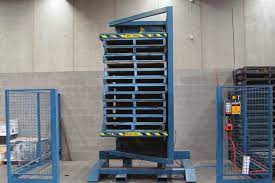
A Deeper Look at Product Protection and ROI
The financial case for damage reduction is one of the easiest ways to calculate the return on investment (ROI) for a pallet inverter. The logic is simple: preventing loss is the same as generating profit.
Damage during manual transfer happens in several ways:
- Drops: A worker loses their grip on a heavy or awkward box.
- Impacts: Boxes are bumped or slammed down during stacking.
- Crushing: The new stack is not built correctly, causing boxes at the bottom to be crushed by the weight above.
- Contamination: A box is dropped on a dirty floor.
A pallet inverter's design methodically prevents these issues. The load is clamped with a pressure-sensitive system that can be adjusted for delicate products. The entire load moves as one unit. The rotation is smooth and controlled. There is no opportunity for a single box to be mishandled.
Let's look at a simple ROI calculation for a hypothetical Thai juice company:
| Metric | Value |
|---|---|
| Average Value of Goods per Pallet | $1,500 |
| Number of Pallets Transferred per Day | 50 |
| Number of Operating Days per Year | 250 |
| Total Annual Pallets Transferred | 12,500 |
| Scenario 1: Manual Transfer | |
| Estimated Damage Rate | 0.8% |
| Annual Pallets Damaged | 100 |
| Annual Loss from Damage | $150,000 |
| Scenario 2: Pallet Inverter | |
| Estimated Damage Rate | 0.05% |
| Annual Pallets Damaged | ~6 |
| Annual Loss from Damage | $9,000 |
| Annual Savings from Damage Reduction | $141,000 |
In this conservative example, the savings from damage reduction alone could justify the investment in a high-quality pallet inverter in less than a year. This doesn't even account for the significant savings from increased labor productivity and improved safety. As an engineer who has built a business, I always look for investments that pay for themselves. This is one of them. It's a clear, logical decision that improves product quality, lowers costs, and makes your entire operation more robust.
My Insights
I have spent my entire career in the world of industrial machinery, first as an engineer and now as the founder of SHJLPACK. While my core expertise is in coil and steel wire packing, the fundamental principles of good engineering and smart automation are universal. Whether you are handling a 20-ton steel coil or a pallet of delicate pharmaceutical vials, the goals are the same: you want to do it safely, efficiently, and without damaging the product.
What I've seen in Thailand with the adoption of pallet inverters is a perfect example of this philosophy in action. It shows a deep understanding that logistics and material handling are not just cost centers; they are opportunities to create a competitive advantage. This is a lesson that applies directly to any industry, including the steel sector that leaders like Javier Morales operate in.
Javier, you understand that investing in a state-of-the-art continuous caster isn't just about making steel. It's about making higher quality steel, with less waste, and with greater consistency. The pallet inverter, though much smaller in scale, follows the exact same logic. It is an investment in quality control, process stability, and operational excellence right at the end of your line.
But the machine is only half of the solution. The other half is the partner you choose to work with. A supplier just sells you a piece of equipment. A true partner, however, takes the time to understand your specific challenges. They help you analyze your process, select the right configuration, and ensure the machine is integrated seamlessly into your workflow. They provide the training and support to make sure you get the maximum return on your investment. This is the approach we have always taken at SHJLPACK. Our mission isn't just to sell machines; it's to share knowledge and help our clients build stronger, more profitable businesses. The success of our clients is our success.
Conclusion
Adopting pallet inverters is a key strategic move for Thai industries. It directly improves safety, hygiene, and efficiency, providing a clear and rapid return on a smart business investment.



